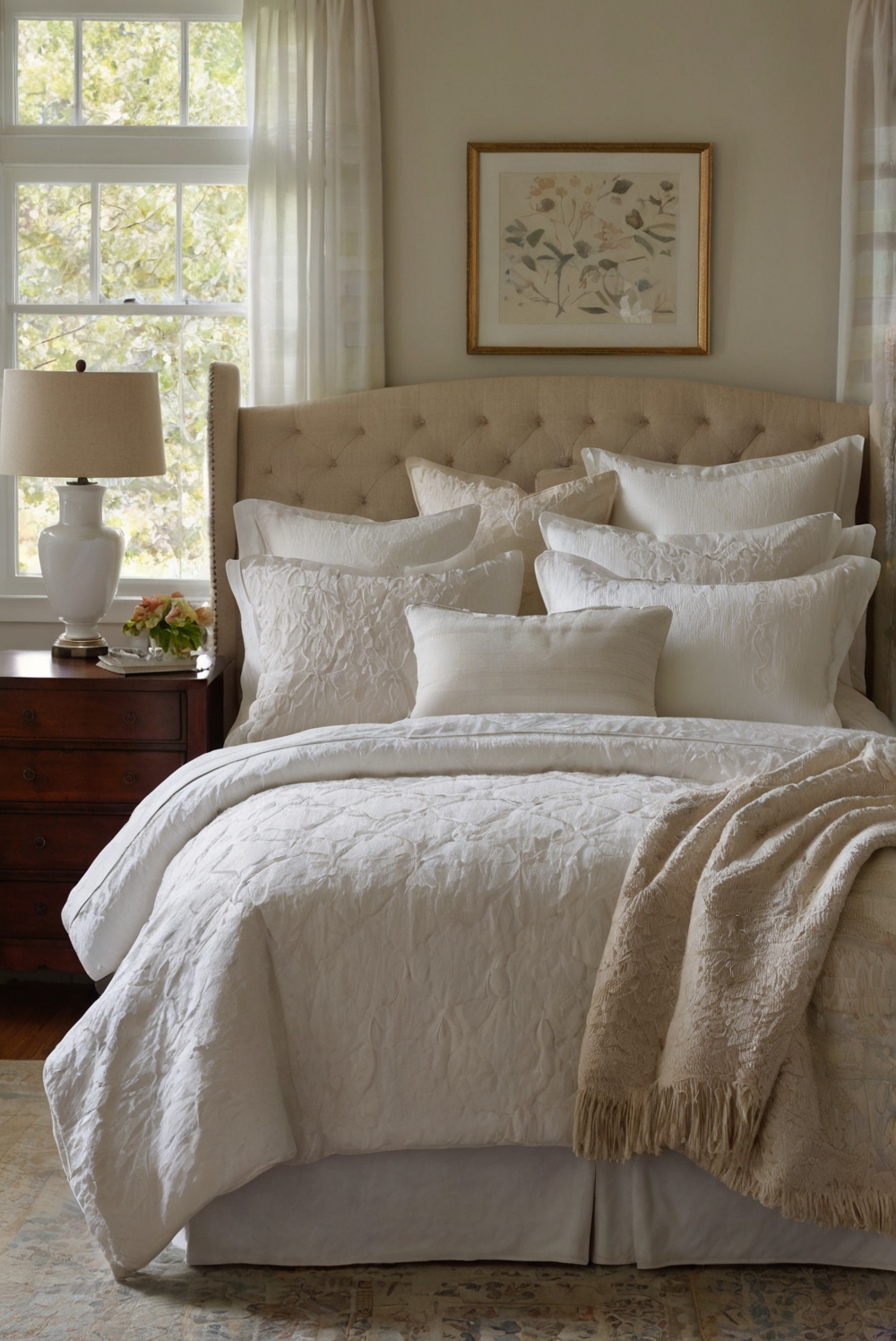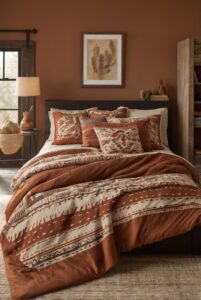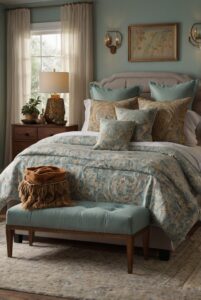Explore how to select bedding with hypoallergenic properties while enhancing your interior design with our daily routine for interior designers.
What are some considerations for choosing bedding with hypoallergenic properties?
To ensure bedding with hypoallergenic properties for your home decor, focus on materials like bamboo, organic cotton, or silk that are less likely to trigger allergies. Look for a thread count of 300-400 for quality sheets, choose duvets and pillows with hypoallergenic fillings like down alternative, and opt for allergen-proof mattress and pillow protectors. Regularly washing bedding in hot water and using a HEPA filter in your bedroom can help reduce allergens. Consider the color schemes in your home interior design as calming neutral tones can promote a restful atmosphere.
Considerations for Choosing Hypoallergenic Bedding:
When selecting bedding with hypoallergenic properties, there are several important factors to consider to ensure a comfortable and allergy-free sleep environment.
MATERIAL:
One of the most crucial aspects to consider is the material of the bedding. Opt for natural fibers such as cotton, bamboo, or silk, as they are less likely to trigger allergies compared to synthetic materials. These natural fibers are breathable, hypoallergenic, and gentle on the skin, making them ideal choices for individuals with allergies.
BREATHABILITY:
Bedding that promotes breathability is essential for reducing allergens such as dust mites and mold. Look for bedding that allows air to circulate freely, preventing the buildup of moisture and allergens. Proper ventilation in your bedding can help minimize allergy symptoms and create a healthier sleep environment.
HYPOALLERGENIC TREATMENTS:
Choose bedding that has been treated with hypoallergenic solutions or finishes to further reduce allergens. Some bedding products are specially treated to resist dust mites, mold, and other allergens, providing an added layer of protection for allergy sufferers. Be sure to check the product labels for any hypoallergenic treatments before making a purchase.
Investing in Quality:
When it comes to bedding with hypoallergenic properties, investing in quality products is key to ensuring long-term comfort and allergy relief. High-quality bedding is more durable, resistant to wear and tear, and often undergoes stringent testing for allergens. While quality bedding may come at a higher price point, the benefits it offers in terms of comfort and allergy protection make it a worthwhile investment.
Regular Cleaning and Maintenance:
To maintain the hypoallergenic properties of your bedding, it is essential to follow a regular cleaning and maintenance routine. Wash your bedding frequently in hot water to kill dust mites and remove allergens. Additionally, consider using allergen-proof covers for pillows and mattresses to further protect against allergens. By keeping your bedding clean and well-maintained, you can create a healthier sleep environment and reduce the risk of allergy flare-ups.
In conclusion, choosing bedding with hypoallergenic properties involves considering factors such as material, breathability, hypoallergenic treatments, quality, and regular cleaning. By selecting the right bedding that addresses these considerations, individuals with allergies can create a comfortable and allergy-free sleep environment. Investing in high-quality, hypoallergenic bedding and following a proper cleaning routine are essential steps towards improving sleep quality and managing allergy symptoms.
1. What are hypoallergenic bedding materials?
Hypoallergenic bedding materials are specially designed to minimize the risk of triggering allergic reactions in sensitive individuals. These materials are typically made from natural fibers like cotton, silk, or bamboo, which are less likely to harbor dust mites, mold, or other allergens. Additionally, hypoallergenic bedding may be treated with anti-microbial agents to further reduce the growth of allergens.
2. How can I identify hypoallergenic bedding?
When choosing hypoallergenic bedding, look for labels or certifications that indicate the product has been tested and proven to be hypoallergenic. Certifications from organizations like the Asthma and Allergy Foundation of America (AAFA) or Oeko-Tex can provide assurance that the bedding meets certain standards for allergen control.
3. What are some benefits of using hypoallergenic bedding?
Using hypoallergenic bedding can help reduce allergic reactions, improve sleep quality, and promote overall health and well-being. By minimizing exposure to common allergens like dust mites and mold, hypoallergenic bedding can create a cleaner and healthier sleeping environment.
4. How should I care for hypoallergenic bedding?
To maintain the hypoallergenic properties of your bedding, it’s important to follow care instructions provided by the manufacturer. Regularly washing bedding in hot water and using a hot dryer can help kill dust mites and bacteria. Additionally, using allergen-proof covers on pillows and mattresses can further protect against allergens.
5. Are there any specific considerations for choosing hypoallergenic bedding for children or pets?
When selecting hypoallergenic bedding for children or pets, it’s important to consider their unique needs and sensitivities. Look for bedding materials that are gentle on sensitive skin and free from harsh chemicals. Additionally, consider the durability and washability of the bedding to ensure it can withstand frequent use and cleaning.




